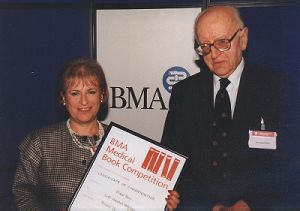Anyone who has a wheat intolerance, like I do, will know the misery of coping with the symptoms and how socially debilitating it can be. And if you're intolerant to the wheat, the chances are you may have issues with other gluten grains like oats, barley and rye, so substituting wheat for rye bread, which I can only liken to eating the sole of my shoe or chomping my way out of a cardboard box, can be soul-destroying when you're in need of a comforting fix of hot, springy buttered toast.
Since food manufacturers began tampering with our food in the hopes of making it last longer and look more appetizing, consumers have begun voting with their digestive systems which have finally lost patience and it can only be consumer demand that accounts for the plethora of gluten-free food shelves that have appeared miraculously in the supermarkets (I suspect, rightly or wrongly, all made by the same source but packaged corporately); not to mention all the new food products that have emerged, often from sufferers themselves or with suffering relatives, after experiments with healthier ways of cooking (which reminds me, I'm still waiting for that box of gluten-free bread samples using non-gluten flours and no yeast (hurrah!) from the Artisan Bread Organic bakery (online bakery at
http://www.artisanbread-abo.com/).
The problem for some of us, though, is that most of these mass-produced gluten-free foods on the shelves contain other substances, like sugar, citric acid or corn products which, if you have systemic candida or other gastric problems, are also likely to create digestive disturbances. The upside is that at least someone is making an effort and there are now all sorts of once-forbidden products that are free from intolerance ingredients on the market, like flour, stock cubes, pasta, chocolates and ice cream (
http://www.boojabooja.com/)
Food for Friends gluten-free recipe book
So you can imagine my delight when Infinite Ideas, the Oxford publishers, sent me a copy of
Food for Friends - Modern Vegetarian Cooking at Home, by Jane and Ramin Mostowfi with Kalil Resende. Included in the recipes are vegan and gluten-free options and they're taken from the menu at the restaurant of the same name that they run in Brighton. Ramin and Jane took it over in 2004, joined by Kalil six months later and they have since built up a good reputation for inventive vegetarian cooking using local ingredients and exotic flavours. 'One of the features of our book is that many recipes are dairy and/or gluten-free, and that simple adjustments are often suggested for adapting dishes to specific diets...' The book is a collection of their customers' favourites and for the ingredients you don't have to drive 60 miles to find the only supplier of obscure foodstuffs in a barn down a cobbled street.
Beginning with the Basics - stocks, sauces, dressings - salads and soups lead on to pastas, grains and pulses, fritters and burgers, tarts and stuffed veggies, ending with big pots and slow cooking and a section for special occasions, desserts and baking. So if you're gluten-free, you can take your pick from Spiced Pumpkin, Sweet Potato, Coconut and Ginger Soup to Puy Lentil, Aubergine and Red Wine Moussaka and much more.
Phil Vickery's Gluten-Free Cooking recipes
TV chef Phil Vickery goes a step further in his book,
Seriously Good! Gluten-Free Cooking. He became interested in gluten-free cooking when selling some of his Christmas puddings at a fayre and noticed how many people thought they couldn't buy them because they had Coeliac Disease. Phil already knew about it from his past cooking experience and was delighted to tell them that the puddings were gluten-free. He joined up with Coeliac UK to produce his cookery book and it begins with a lengthy explanation about Coeliac Disease, its symptoms, diagnosis, treatment and suggestions for choosing and eating alternative foods.
Although many people on a gluten-free diet can't tolerate gluten, they are not necessarily coeliac, though recent research suggests that a large percentage of people diagnosed with irritable bowel syndrome (IBS) - an umbrella term used by medics for 'I don't know' - are in the process of becoming coeliac. It isn't something that happens overnight and it can take many years to develop. And it's worth remembering that tests and biopsies for Coeliac Disease can produce false negatives and positives. (And can be very painful - I remember waking up in the middle of a Coeliac bowel biopsy and being unable to convey how excruciatingly painful it was.)
Phil's recipes are not vegetarian but there is a special section of vegetarian recipes. I looked for the Christmas pudding recipe but ironically, it isn't there, so I'll have to make do with Millionaire's Shortbread with Bramley Apple Dip. But he does cover Breakfasts, Smoothies and Drinks, Snacks, Outdoors, Comfort, Salads, Parties, Baking and Desserts. Both these books are lavishly illustrated with beautiful colour plates and are in hardback format.
By coincidence, as I was writing this, a friend arrived home from a cruise on Cunard's recently-launched Queen Elizabeth liner to tell me that they provide a full gluten-free menu for anyone who requests it. I'm finding that more and more savvy restaurants are providing gluten-free alternatives on their menus, so there is hope for humanity yet.
Cooking Without...
And I can heartily recommend Barbara Cousins's cookery books, which cut out just about everything a sensitive stomach could wish for - Cooking Without, Vegetarian Cooking Without and Cooking Without Made Easy (Thorson's). I've been using them for years and they're great everyday cookbooks.











